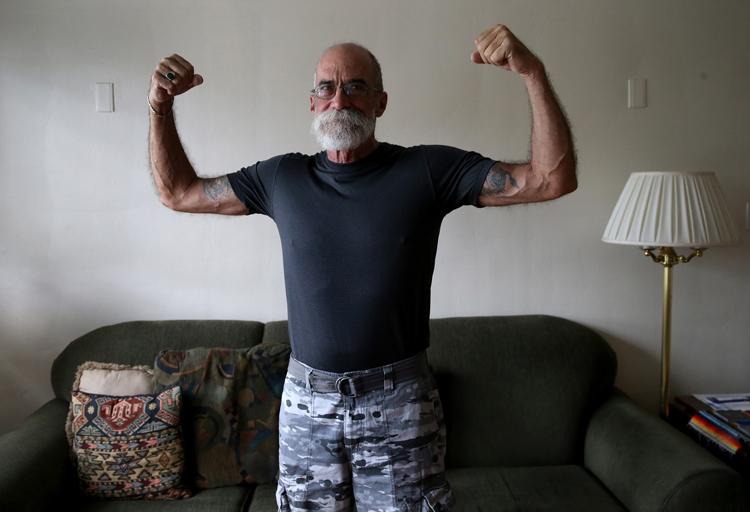Following the results of a new study, a Pitt researcher will begin to look at ways people with HIV can live healthy lives well into old age — a prognosis that was unthinkable when the epidemic began in the 1980s.
“Because HIV was such bad medical news, nobody really prepared for the question of HIV and aging,” Ronald Stall, the lead researcher from Pitt’s Graduate School of Public Health, said.
But with the life expectancy of HIV-positive individuals nearing national averages of uninfected people, Stall has announced a study that will examine how to promote health among aging gay and bisexual men living with and without HIV. The study will specifically be focusing on gay and bisexual men because they represent 57 percent of all individuals living in the United States with HIV and are the highest risk group for contracting the disease, according to the CDC.
The three-year “Aging with HIV” study, beginning later this year, will focus on protective factors, called resiliencies, that are keeping some HIV-positive men healthy. At the end of the study, Stall hopes to identify key resiliencies that can teach younger HIV-positive men how to age more comfortably with the disease.
The National Institutes of Health awarded a $2.1 million grant for the study, which will consist of a voluntary survey of 1,850 HIV-positive and negative men who are participants in the Multicenter AIDS Cohort Study, a 30-year study with participants in Chicago, Baltimore, Los Angeles and Pittsburgh. The “Aging with HIV” study will issue surveys to participants twice a year, resulting in six different sets of data to compare.
Stall said the study will focus on resiliencies, or protective factors, that are keeping some men with HIV healthy. Among these resiliencies, Stall said the dyadic relationships, those between partners, families, friends and community organizations, play an important role in understanding how these men are staying healthy.
When the study is complete, Stall said he expects to find similarities across the types of relationships in the data and will interpret it for individuals who are struggling with their illness.
“Wouldn’t it be smarter to understand strategies that men [with HIV] are using to age into happy old age and learn how to do that?” Stall said. “And then translate some of these lessons learned to guys who are having a harder time?”
With modern research, therapy and drugs, people who are HIV-positive can live into their 60s. In the United States, data shows HIV-positive men and women can live until they’re at least 62 and 64, respectively, compared to negative men and women living to 77 and 82.
More than half of the HIV-positive population is over the age of 50, according to AIDS.gov, yet each year in the United States, one in four new cases of HIV are between the ages of 13 and 24.
“Any young people who are getting infected now with HIV can expect to live to ripe old age,” Stall said.
Marcus Robinson, president of Pitt’s Rainbow Alliance, hopes his organization can help those living with HIV in the gay community. Rainbow Alliance is Pitt’s LGBTQ+ undergraduate student organization that provides for the needs and interests of the community through advocacy, education and social opportunities.
As Stall said, a community organization, like Rainbow Alliance, can be a dyadic relationship that can help those living with HIV.
“A lot of our community is affected by it [HIV],” Robinson said. “It’s important that we make sure we provide support and a welcoming environment.”
To help those without HIV, the Rainbow Alliance offers events throughout the year, including two smaller events each week to discuss various topics involving the gay community, such as STD prevention and accepting everyone in the gay community. Additionally, the club offers free condoms to reduce the transmission of HIV and other sexually transmitted diseases.
According to Alan Jones, a certified HIV tester with Pittsburgh AIDS Task Force, one of the easiest ways to prevent HIV, aside from abstinence, is to use a condom. Jones said proper condom use is essential to maintaining safe, healthy sexual relations, especially early on in a relationship.
Jones, a prevention specialist for the past 20 years, has seen the effect of medication for HIV-positive individuals first-hand. Though the medicine has vastly improved, Jones said, “[The medication] does take a physical wear and tear on the body.”
At the conclusion of the study, Stall anticipates that the dyadic relationships among gay and bisexual men, in addition to the medication, will help younger HIV-positive individuals transition smoothly into old age.
“At one point in the game, being diagnosed with HIV was tantamount to a death sentence. It’s not anymore,” Stall said. “HIV-positive people are going to be able to live normal life spans.”



